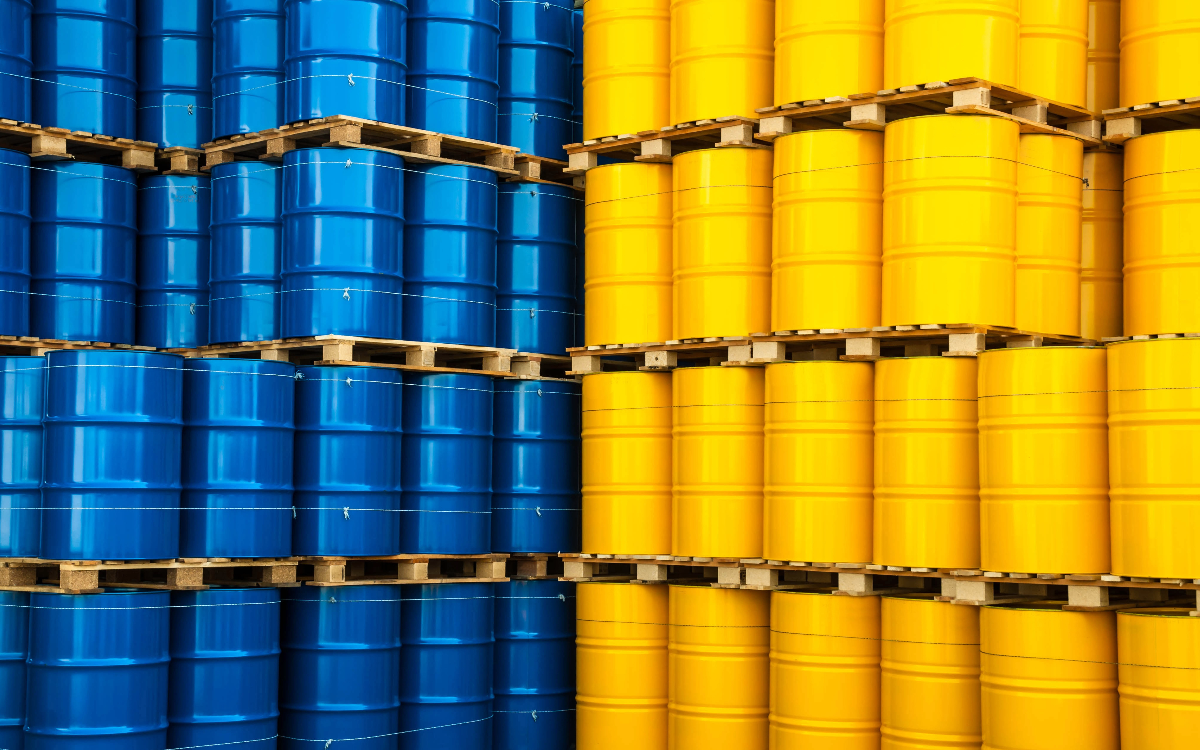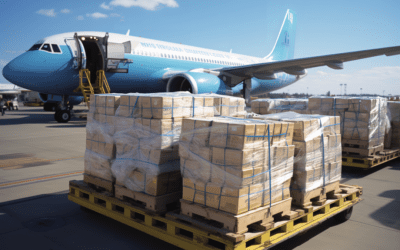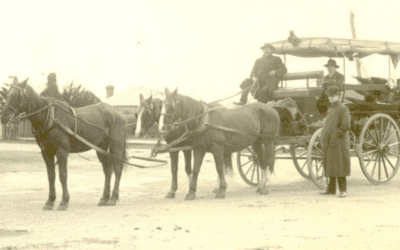Transporting bulk hazardous oils and lubricants can be complex for businesses. The process involves meticulous planning and execution to ensure these materials’ safe and efficient movement. Key challenges that require addressing include proper storage and handling, specialized equipment requirements, compliance with regulatory standards, and mitigation of inherent risks.
Article Overview
One challenge of bulk transportation is storage
- Lubricants can deteriorate in storage due to several factors, including contamination, exposure to various temperatures, and extended storage periods.
- Contamination can compromise the quality and efficacy of bulk oils and lubricants. This issue can significantly impact the performance of lubricants, potentially resulting in decreased functionality and prolonged downtime.
- Bulk oils stored in tanks can be susceptible to water buildup at the bottom. Using water-phase floaters helps facilitate the decontamination process for oil and petroleum storage.
Choosing the right storage tank design is crucial to mitigate storage-related challenges
Federal guidelines regulate the proper storage of hazardous oils and lubricants, outlining specific tank monitoring and maintenance rules. To maintain compliance, an annual inspection of the tank is necessary to identify any required cleaning or flushing procedures.

How to inspect tanks:
- 40 CFR 112.8 © (6): Oil Pollution Prevention
- API 653: Tank Inspection, repair, alteration, and reconstruction
Efficient dispensing equipment is essential when dealing with hazardous oils and lubricants. Various pieces of specialized equipment are required to ensure effective dispensing. Oil dispenser equipment provides effective oil dispensing, similar to lubricants.
Some types of dispensing equipment are:
- Oils
- Oil Pumps
- Oil Meters
- Oil Guns
- Funnels
- Filter/Transfer Carts
Proper equipment for dispensing is crucial to ensure adequate machinery maintenance and prevent breakdowns or failures. Additionally, it significantly reduces the risk of cross-contamination, making it an essential aspect of any dispensing process.
During the loading and unloading process, proper handling of bulk materials is crucial to prevent contamination of oils and lubricants. Contamination can lead to changes in the chemical and physical properties of oils and lubricants, which poses significant risks to machinery and equipment.
To avoid cross-contamination:
- Ensure that transport is dedicated to only one type of oil or lubricant.
- Remember that any mixing can pose high risks.
When loading and unloading:
- Follow a sequence for all hazardous materials to ensure safety measures.
- Always use pre-cleaned tank cars or trucks for transportation.
Both types of oil or lubricant require pre-cleaned transportation, and it’s crucial to note that transporters must dedicate each transport exclusively to one type of oil or lubricant to uphold purity and safety.
The transportation of hazardous oils and lubricants can present substantial dangers depending on the type of hazardous material being transported. To effectively minimize these risks, adhering to federal regulations and API standards pertaining to spill prevention, containment, and fire protection is crucial.
Some regulations to follow are:
- EPA guideline 40 CFR 280: Technical Standards and Corrective Action Requirements for Owners and Operators of Underground Storage Tanks (UST)
Also, review the following API standards for more information:
- API Recommended Practice 2350 – Overfill Protection for Storage Tanks in Petroleum Facilities
- API Recommended Practice 2021 – Fight Fires in and Around Flammable and Combustible Liquid Atmospheric Storage Tanks
Making sure that you follow the necessary regulations is crucial when it comes to handling hazardous materials.

Remember to do the following:
- Frequently check for leaks.
This process is vital to prevent environmental contamination. According to the Environmental Protection Agency, underground storage tanks must be inspected for leaks every thirty days to safeguard against potential harm.
- Assess your compliance with bulk oils and lubricants.
Storage management requirements involve thoroughly reviewing an installation’s operations and records. This process is vital to ensure businesses meet all legal requirements and maintain safety standards.
- Understanding the product
Understanding the importance of transporting these substances benefits your business, but what exactly falls under “hazardous oils and lubricants”?
Examples of common oils in transport:
Petroleum oil, Motor oil, Synthetic Oil, Industrial lubricants, Gear lubricants, and Hydraulic fluid.
The substances follow the transportation guidelines as explained above, but the fun part is learning how they can be essential to us.
- Petroleum Oil
Petroleum Oil is a fossil fuel and nonrenewable energy source.
- A single rail car transports sufficient crude Oil to produce approximately 13,500 gallons of gasoline.
- In 2022, the typical crude oil shipment in the United States consisted of roughly 650 barrels of Oil per average carload.
It plays a vital role in our daily lives by serving as a significant energy source. It fuels our vehicles, powers electricity generators, and is also used in heating systems. Additionally, petroleum oil is used to manufacture many everyday items, including plastics, fertilizers, and pharmaceuticals. Without petroleum oil, many aspects of modern life would not be possible.
- Motor Oil
Motor Oil is refined directly from crude oil, performing several functions, such as reducing friction and preventing corrosion. On average, the United States consumes about 579 million gallons of motor oil yearly. Additionally, it is a vital fluid that is essential for the proper functioning of engines.
- Similarly, manufacturers chemically modify synthetic oil, utilizing it as engine oil, with predominant usage in individual cars and only a small fraction allocated to transportation.
In 2022, petroleum products accounted for about 90% of total U.S. transportation sector energy use.
- Industrial Lubricants
Industrial lubricants, including gear lubricants and hydraulic fluid, play a vital role in reducing friction and wear within machines.
- As of 2023, the USA held the largest lubricant market in the world.
- In 2020, market volume was estimated at 6.85 million metric tons.
The broader term of industrial lubricants includes gear lubricants and hydraulic fluid. Machinery utilizes gear lubricants to safeguard gears from wear and tear, with common applications found in heavy industries such as steel, mining, and cement.
- Hydraulic fluid
In heavier machinery, hydraulic fluid serves as both a medium for power transfer and as a lubricant for hydraulic components, safeguarding them against wear and tear.
Oils and Lubricants
Oils and Lubricants go hand in hand and are extremely important for industrial use throughout the country. Transporting hazardous oils and lubricants is challenging, it can be done safely and efficiently. Remember that storage considerations and specialized equipment need regulatory compliance. This requires meticulous planning and adherence to best practices.
Choosing KCH Transportation for Safe and Compliant Hazardous Materials Handling
To navigate these challenges successfully, investing in a reliable transportation company experienced in handling hazardous materials can be a strategic and efficient decision for your business. Prioritizing your business’s safety and compliance can ensure smooth and secure transportation while minimizing risks and environmental impact.






